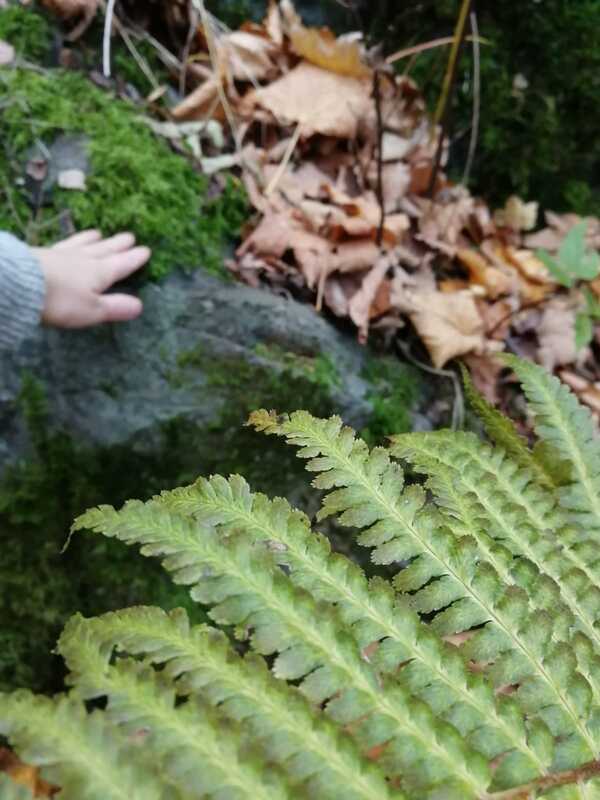Biodiversity &
Evolutionary History
|
You are surrounded by bryophytes, which evolved almost 500 million years ago, and trees, whose evolutionary history dates back to 400 million years ago.
The ancestors of the modern dragonfly that flies by you, started to colonize the land at the same time as the first plants and their fungi partners. Organisms evolve constantly in interaction with each other, also today. Have you ever thought, how far back in time the history of species dates to? How has the biodiversity of our planet evolved? |
|
Audio walk - mobile nature trail With the help of this material, you can travel back in time to explore the origins of squirrels, pines or dragonflies and other species familiar to us. The audio tracks serve as introduction to animal and plant biology, evolution and interaction between species, mixing them with exercises that engage with listeners embodied imagination. Instructions: It is possible to listen to this walk wherever you want: You can go out in your chosen forest or other terrain nearby, or listen to the tapes relaxing on the floor - or on a soft bed of moss. You can go on this journey alone, or together with others. The tracks are best suited for younger children around 6-10 years old, but they do serve older listeners too. The tracks are a journey back in the Earth's history, starting from track no. 1. Fossils, and ending in track no. 10. Present time, that takes you back to current time. But you can of course choose to listen just some of them. The total lenght of the tracks is 32 minutes. Here you can listen to the tracks as a playlist, or select them one by one to listen in your laptop, phone, or other mobile audio device. You also need a pair of headphones or a good portable speaker. If needed, you can also access the complete text of the audio tracks here (pdf). If you want to prepare the nature trail to certain area for others, you can print out the postcard-sized QR-codes here (pdf). These ones you can then attach along the trail or around the chosen area (without damaging the plants or trees) for the participants to find. To open the QR-codes, you need a QR reader in your phone. You can download the app for free from most application stores, just search for 'qr-reader'. |
By clicking the icons below, you can listen to tracks 1 - 10 one by one:
|
|
|
– – – – – – – – – –
Sources for sound effects (Creative Commons & Public Domain) are listed in Soundcloud together with each track. Audio walk read in English by Inari Alanko. – – – – – – – – – – More information and inspiration: Videos: * Wonderchicken: https://www.youtube.com/watch?v=ExOQxJq2l98 Articles: * Lutzoni F. & Miadlikowska J. 2009. Lichens. Current Biology Vol 19 No 13. https://doi.org/10.1016/j.cub.2009.04.034 * Cappellari S.C., Schaefer H. & Davis C.C. 2013. Evolution: Pollen or Pollinators — Which Came First?, Current Biology Vol 23 No 8. https://doi.org/10.1016/j.cub.2013.02.049 – – – – – – – – – – |
|
– – – – – – – – – – Our materials are licensed under the Creative Commons Attribution-ShareAlike 4.0 International License: http://creativecommons.org/licenses/by-sa/4.0/. It means you can use our materials freely, but please remember to always credit our work and mention us whenever you are sharing contents of our project online: Instagram: @evolution_in_action, Facebook: @evoluutiopajat, Twitter: @EvoWorkshops. If you use our materials in teaching, we are happy to hear greetings and feedback. You can tag us on social media or send us an email: [email protected] Evolution in Action logo: jpeg, eps |











